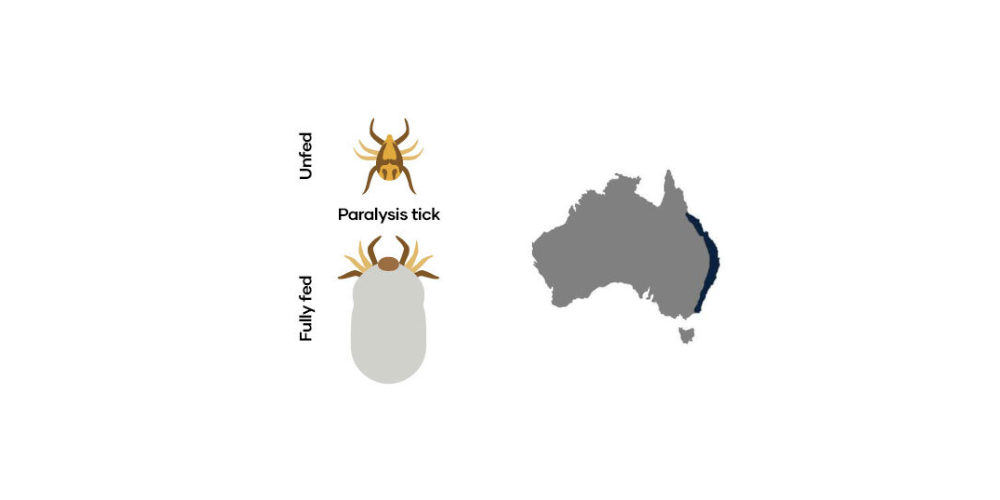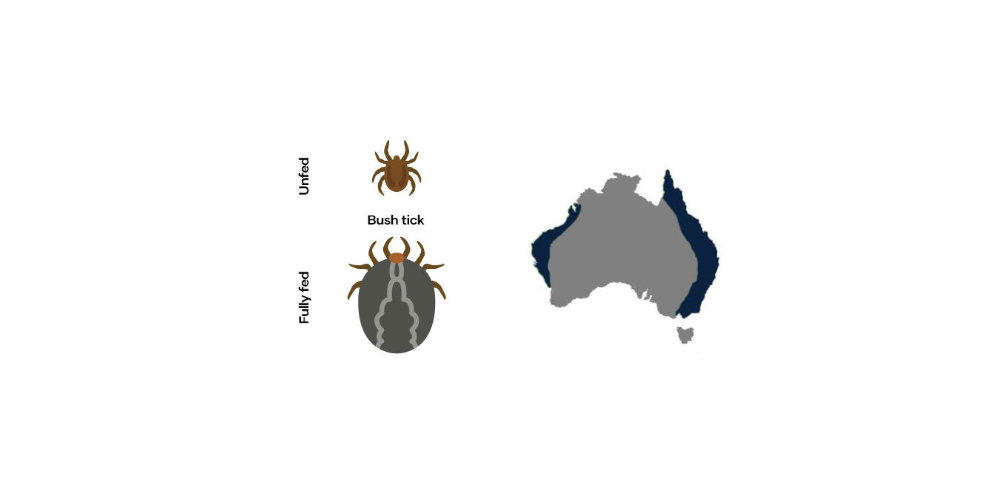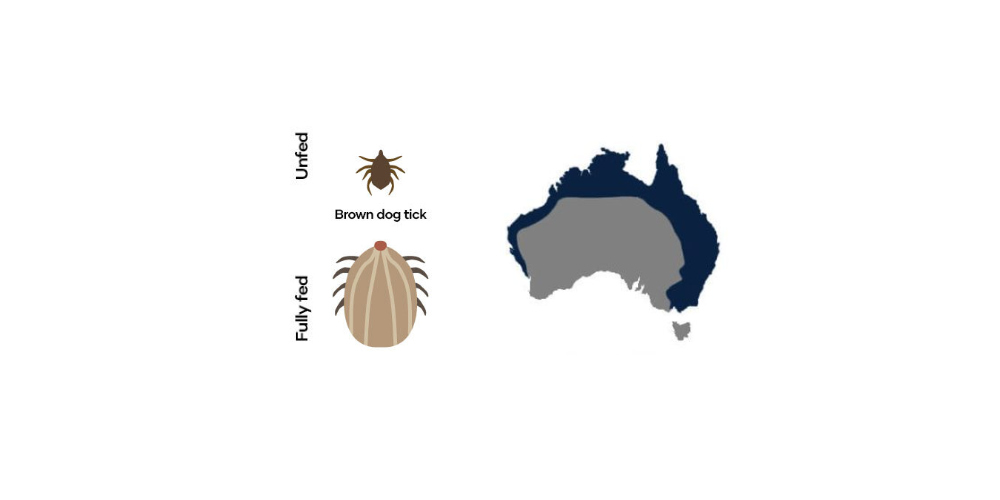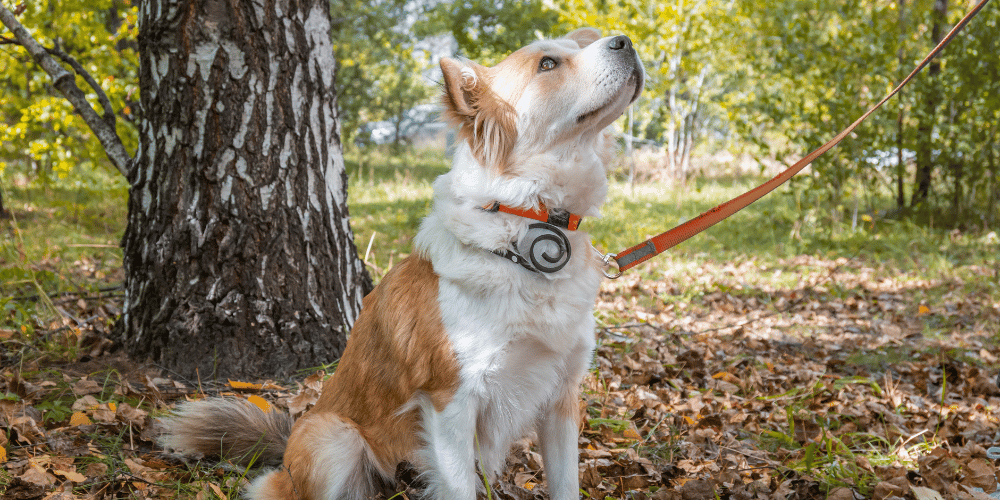
Navigating the great outdoors with your four-legged friend can be an adventure filled with joy, discovery, and...ticks? Yep, you read that right. As your trusted source for all things pet-related, Vet Products Direct is here to help you understand the ins and outs of the most common tick species that our furry friends might encounter in Australia.
Let's jump right in and get to know these little critters a bit better!
Unmasking the Ticks
There are three main tick species that you and your pet need to be aware of - the Paralysis Tick, the Bush Tick, and the Brown Dog Tick.
Paralysis Tick (Ixodes holocyclus)
The infamous Paralysis Tick takes the top spot for the most harmful tick found in Australia. With its grey body and legs located close to its head, this tick can be relatively easy to spot.
Symptoms
Pets bitten by a Paralysis Tick may initially experience loss of appetite, a change in voice, and instability on their legs. If left unnoticed, these symptoms can worsen, leading to complete paralysis and difficulty breathing. It's crucial to know that the earlier a paralysis tick is detected and treated, the better the survival rate for your pet.
Treatment
Should you find a Paralysis Tick on your pet, seek veterinary assistance immediately. Treatment typically involves an anti-tick serum and close monitoring of your pet.
Habitat
These ticks are primarily located along the East Coast of Australia, from North Queensland to Northern Victoria.


Bush Tick (Haemaphysalis longicornis)
While not as severe as the Paralysis Tick, the Bush Tick can still induce discomfort and potential illnesses. These ticks tend to be smaller and redder in appearance.
Symptoms
Bush Tick bites typically cause local irritation and itching, and in rarer cases, they may transmit diseases like Babesiosis.
Treatment
Usually, you can manage a Bush Tick infestation with over-the-counter treatments available here at Vet Products Direct. However, if your pet appears uncomfortable or the situation worsens, it's time to visit your vet.
Habitat
Bush Ticks can be found in numerous rural and bushland areas across Australia.


Brown Dog Tick (Rhipicephalus sanguineus)
Last, but certainly not least, the Brown Dog Tick is a common tick species in Australia. Small and brown, these ticks can carry several diseases that affect dogs.
Symptoms
Infected pets might display symptoms such as fever, loss of appetite, depression, and in severe cases, anemia and paralysis.
Treatment
Effective treatment options for Brown Dog Tick infestations include tick control products like "Frontline Plus", "NexGard", and "Bravecto", all available here at Vet Products Direct. If the infestation is severe, make sure to consult with your vet right away.
Habitat
These ticks are widespread across Australia, primarily infesting dogs in urban areas.


Keeping Ticks at Bay: Preventative Measures
A stitch in time saves nine - and preventing tick infestations is much easier than treating them! Regular use of tick control products like "Simparica Trio", "NexGard", or "Bravecto" can help keep your pets tick-free.
A Peek into Tick Hiding Spots and Removal Techniques
Ticks love to hide in warm, protected areas on your pet. Make sure to regularly check your pet's skin, particularly after outings in bushland or parks.
If you discover a tick, use a tick twister or fine-tipped tweezers to gently remove it, ensuring you don't leave any tick parts in your pet's skin.
Healthy Pet, Happy Pet: The Importance of Grooming
Regular grooming does more than just making your pet look good - it's an essential part of tick prevention and detection. By regularly brushing your pet's fur, you can reveal any lurking ticks and keep their coat in tiptop shape.
In conclusion, knowing your enemy is the first step in protecting your furry friend from ticks in Australia. By understanding what to look for and how to prevent infestations, you can ensure your pets remain tick-free and healthy. Remember, at Vet Products Direct, we're not just about selling pet products - we're passionate about the wellbeing of your pets, too. Keep those tails wagging, pet parents!

